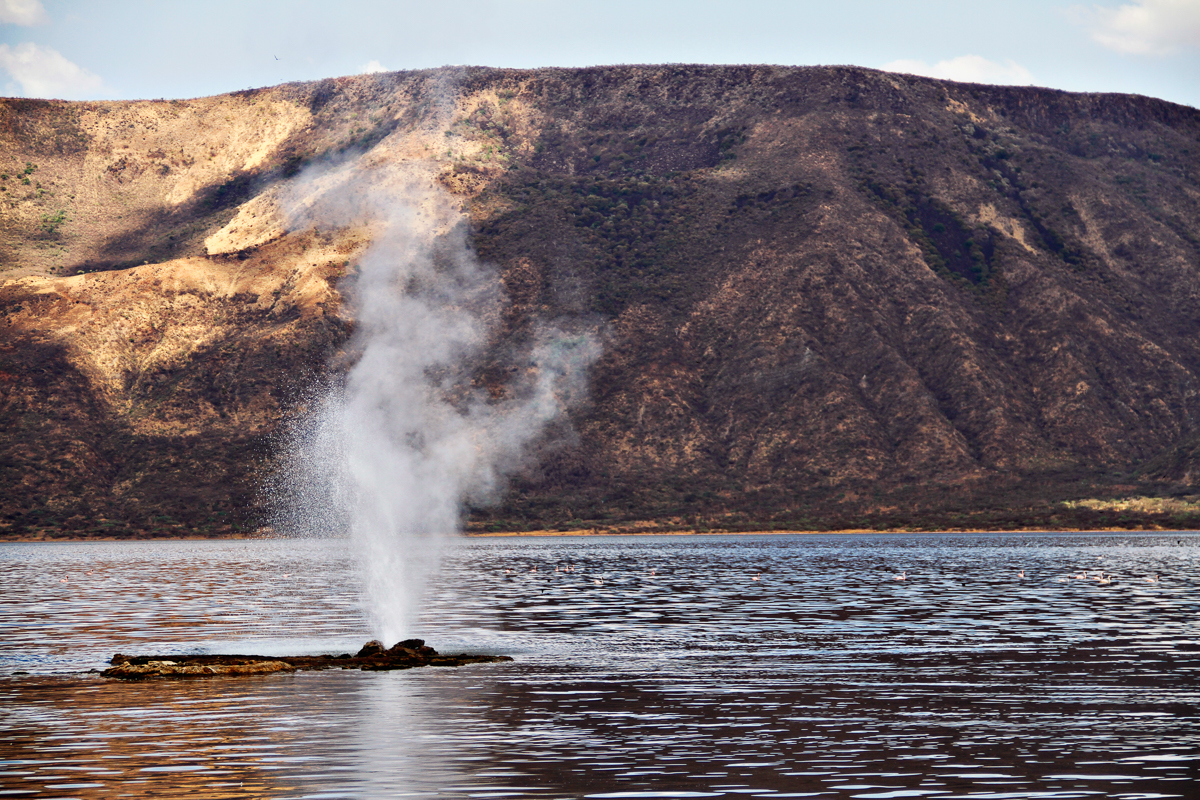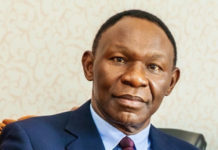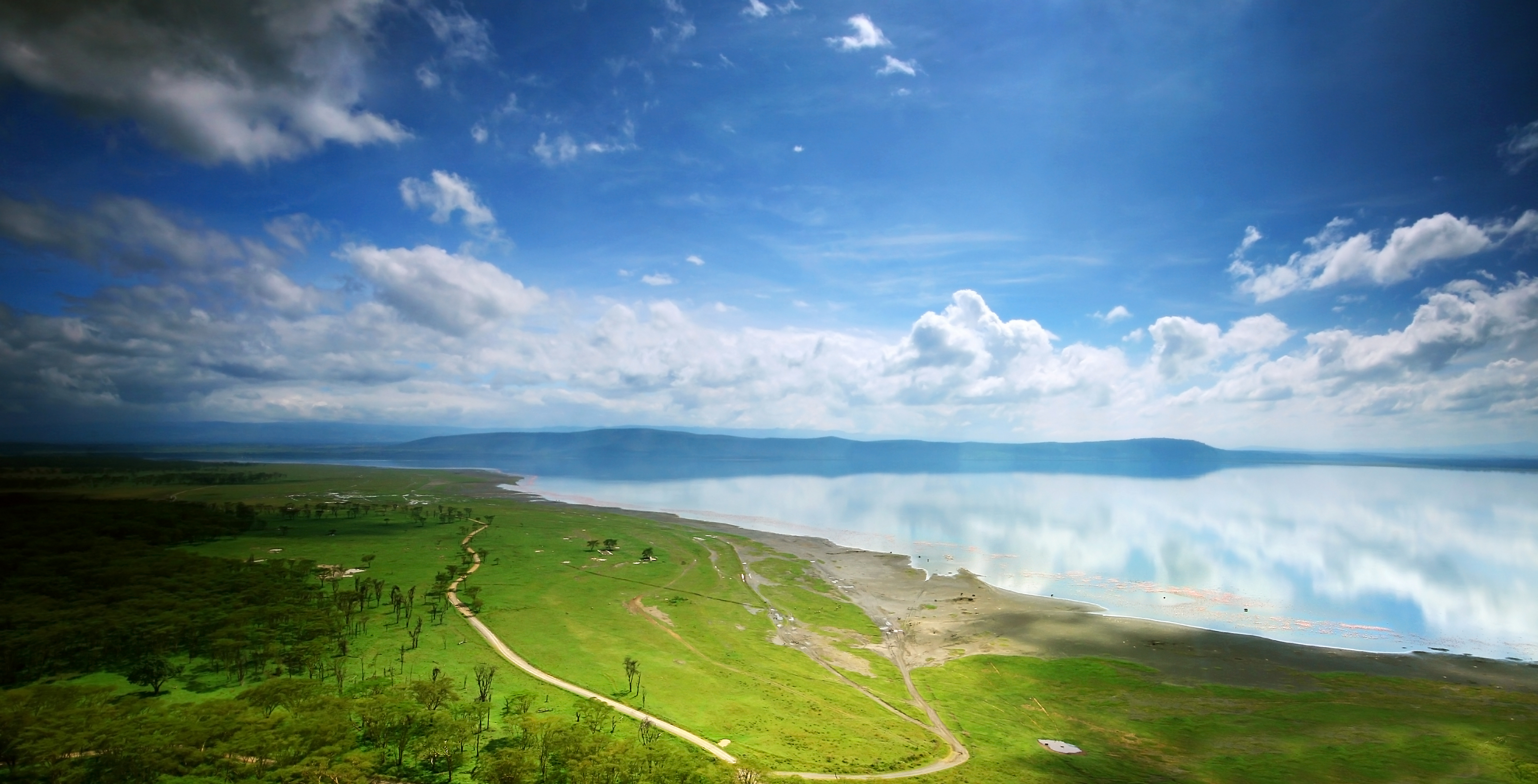Kenya is the leading economy in East and Central Africa with strong growth prospects supported by an emerging urban middle class and an increasing appetite for high-value goods and services. Its strategic location and its well-developed business infrastructure make it a natural choice for investors and many international firms have made it their regional hub. This grants investors access to the larger East African community and regional markets with access to over 385 million consumers. Nairobi is also a major transport hub in East Africa with Connections from Jomo Kenyatta International Airport to major destinations around the world. Additonally, they are all located in a convenient time zone: GMT +3
In the last five years, the Port of Mombasa has achieved significant traffic growth, with total cargo throughput increasing at an annual average of 7.6 per cent from 19.95 million tonnes in 2011 to 26.73 million tonnes in 2015 while container traffic grew by 8.7 per cent from 770,804 TEUs to 1,076,118 TEUs over the five-year period.
Jomo Kenyatta International Airport is Kenya’s largest aviation centre, and the busiest airport in East Africa. Its importance as an aviation center makes it the pace setter for other airports in the region as Africa’s premier hub and ideal gateway into and out of East and Central Africa. The airport serves over 40 passenger airlines and 25 cargo airlines and over 7 million passengers per year.
Kenya affords a pleasant and quality standard of living with its spectacular and diverse natural resources, ranging from wildlife to sceneries, including the world famous Maasai Mara. The country also boasts high quality social amenities such as restaurants, hospitals and Entertainment spots. which is why the country has the highest number of expatriates living and working in Kenya.
Kenya is signatory to a number of multilateral and bilateral trade agreements as part of its trade policy. Kenya is a member of the World Trade Organization (WTO) ), which means its products are available in more than 90% of world markets thanks to its Most Favoured Nation (MFN) treatment. In addition, Kenya is a member of several trade arrangements and beneficiary of trade-enhancing schemes which include the Africa Growth and Opportunity Act (AGOA); duty free quota free market to the EU through the Economic Partnership Agreement (EPA) and Common Market of Eastern and Southern Africa (COMESA) as well as the Tripartite Initiative between the East African Community (EAC), COMESA and Southern Africa Development Community (SADC).
Kenya has a very substantial private sector, including a significant number of foreign investors and is touted as one of the most resilient in the world. The country has always been a market economy. Key players in voicing private-sector concerns include the Kenya Private Sector Alliance (KEPSA), the Federation of Kenya Employers (FKE) and the Kenya Association of Manufacturers (KAM). Furthermore, the government frequently engages in a policy dialogue with private sector players at the highest levels.
Kenya’s standing in the global community of nations has risen over the years. The high profile has been achieved as a result of an aggressive foreign policy and diplomatic campaign spearheaded by the government. This is evidenced by the major international conferences Kenya has hosted in the last two years namely the WTO 10th Ministerial Conference(MC 10) the 14th session of the United Nations Conference on Trade and Development (UNCTAD 14) and the sixth Tokyo International Conference on Africa’s Development (TICAD VI). At the same time, the country has hosted various global leaders such as the former president of USA, Baraka Obama, and the Pope among others. Kenya has not hesitated to take its pride of place in the global arena. Notable achievements in this regard include the participation of Kenya in the recent G7 and the United Nations General Assembly.
Energy
In Kenya, energy is identified as one of the infrastructural enablers of the three pillars of Vision 2030, with an expected surge in energy use within the commercial sector on the road to 2030. As a result, the government has identified the need for generation of additional energy and efficiency in energy consumption as priorities in Vision 2030. In order to promote renewable energy projects such as a wind and solar energy development programme on a commercial scale, the Government of Kenya (GoK) has also introduced a Feed-In Tariff (FIT) policy to attract private investments. The policy provides a fixed tariff for electricity generated in grid-connected mode.
The main sources of energy are wood fuel, petroleum and electricity accounting for 69%, 22%, and 9%, respectively of total energy use. More specifically, 67.5% of electricity is generated using renewable energy sources, which are predominantly hydro with 47.8% and geothermal with 12.4% respectively, while 32.5% is from fossil fuels. The total electricity generated is shared by less than 20% of the country’s population , and more than 80 percent of the population remain without access to the electricity.
Developments in the Kenya Energy Sector
In 2012, the Government announced the discovery of oil in Turkana County. This followed extensive exploratory efforts in areas such as Lamu and Isiolo. Efforts to establish the commercial viability of the oil find are underway, with an expected timeline exceeding three years before the country can become an oil producer. The discovery has been described as a major breakthrough while will contribute significantly to meeting the country’s energy needs.
The confirmation of commercially viable deposits of coal in the Mui Basin, in Mwingi East, Mwingi Central and Mutitu Districts means that Kenya is set to join the coal mining nations of the world. This discovery of coal is expected to go a long way in filling the energy deficit in the country.
Kenya is endowed with vast geothermal potential and is recognised as one of the leading generators of geothermal power in Africa; it is estimated that the country has 7,000 MW – 10,000 MW of geothermal potential and it is currently Africa’s largest geothermal producer with 210 MW of capacity. The discovery of commercially exploitable geothermal steam in Menengai contributed to the country’s energy portfolio that will drive Kenya toward the achievement of Vision 2030. The Kenyan Government has recently initiated the Scaling-up Renewable Energy Program (SREP) investment plan in line with the national renewable energy development strategy
Investment Opportunities
Generation of energy using renewable sources such as wind, geothermal and solar sources – Feed in Tariff (FIT) is a policy strategy which aims to increase investment in renewable energy technologies. The country plans to increase its electricity-installed capacity by 5,538 MW by 2017, develop its diesel plants and hydropower, as well as the drilling and steam field development of well for geothermal energy. On another note, the construction of pipeline and storage facilities for petroleum products also represents an excellent investment opportunity, especially given that the exploration of petroleum deposits in other potential regions of the country present many possibilities.
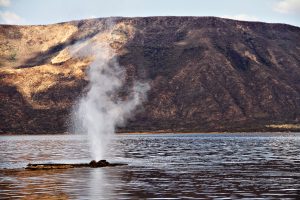 Tourism Sector
Tourism Sector
Kenya has a diverse range of attractions to offer its visitors. There is only a few countries around the world where one can relax on pristine sandy beaches and be able to see wildlife in all forms within a short distance. Kenya has 60 national parks and Reserves all with abundant wildlife. The spectacular wildebeest migration which occurs every year in Kenya’s most visited Maasai Mara National Reserve is referred to as the 7th new wonder of the world.
The diversity of Kenya’s tourism also includes, ecotourism, sports and water-based tourism, conference tourism and home-stay tourism. In the northern part of the country, we have the cradle of mankind from which we all originated, making Kenya a leader in heritage tourism. Kenya is therefore the ultimate destination offering an unparalleled variety of travel and holiday experiences. As our visitors tell us, it is indeed a magical destination.
Tourism is one of Kenya’s leading foreign exchange earner and the third largest contributor to GDP after agriculture and manufacturing. The sector has been growing fast as a result of various factors such as liberalisation, privatisation of tourist markets and continued Government support and commitment to providing an enabling environment, coupled with successful tourism promotion and political stability.
Investors can take advantage of Kenya’s endowment of unique combination of tourist attractions such as beautiful coastal beaches, coral reefs, caves and river deltas, abundant wildlife, including the ‘big five’ in their natural habitats, national parks and game reserves, good climate, beautiful geographical landscapes, savannah grasslands, forests, salt and fresh water lakes. Others include hot springs, mountains, botany and zoology, world heritage sites, and rich cultural history.
Out of the 26 parks and game reserves in Kenya, only 7 parks, including Masaai Mara, Nakuru and Amboseli are fully operational, accounting for more than 80% of the total number of visitors. This presents an opportunity to develop and add value to the other parks with modern facilities and infrastructure.
Investors can also take advantage of several strategies and programmes that have been earmarked by the government to attract investments in the industry such as the creation of three resort cities, the branding of premium parks, the development of high value niche products, the development of a replica of Kenya Utalii college at the coast, and construction of new high- end international chain hotel properties among others things.
Kenya has recorded steady growth in the Meetings and Conference tourism. In 2016 alone, it accounted for 13% of total international tourism arrivals; mostly consisting mostly of business travelers. In 2015, the sector welcomed 117,630 tourists, recording a remarkable 14% increase on 2014 and marking a total contribution of 15.6%, of the total number of international arrivals for the year.
In the past few years leading, global hotel brands have set up in Nairobi. In total, about 15 high end hotels have opened since 2013 (Radisson Blu, Starwood’s Four Point, Hilton Garden Inn and Best Western among others), with about half of these opening in 2016. Of the hotels that have set up since 2013, most are in Nairobi and have added 1,700 new rooms in to the market. In 2013, the country had a hotel room capacity of about 1,500. Another 17 hotels have confirmed plans to set up in Nairobi between 2017 and 2020, and would add another 2,000 rooms in the market. Thus by 2020, the country expects to have an additional 3,700 rooms.
Infrastructure
 Kenya envisages a massive upgrading and extension of the country’s infrastructure. In this regard, the country has highlighted a number of infrastructure projects that present significant opportunities for investors in the coming years. It is important to note that while the Government has put forward plans on how it would like to develop infrastructure, it is equally open to ideas and proposals from potential investors.
Kenya envisages a massive upgrading and extension of the country’s infrastructure. In this regard, the country has highlighted a number of infrastructure projects that present significant opportunities for investors in the coming years. It is important to note that while the Government has put forward plans on how it would like to develop infrastructure, it is equally open to ideas and proposals from potential investors.
The LAPSSET Corridor Program is Eastern Africa’s largest and most ambitious infrastructure project bringing together Kenya, Ethiopia and South Sudan. This mega project consists of seven key infrastructure projects starting with a new 32 Berth port at Lamu (Kenya); Interregional Highways from Lamu to Isiolo, Isiolo to Juba (South Sudan), Isiolo to Addis Ababa (Ethiopia), and Lamu to Garsen (Kenya), Crude Oil Pipeline from Lamu to Isiolo, Isiolo to Juba; Product Oil Pipeline from Lamu to Isiolo, Isiolo to Addis Ababa; Interregional Standard Gauge Railway lines from Lamu to Isiolo, Isiolo to Juba, Isiolo to Addis Ababa, and Nairobi to Isiolo; 3 International Airports: one each at Lamu, Isiolo, and Lake Turkana; 3 Resort Cities: one each at Lamu, Isiolo and Lake Turkana; and The multipurpose High Grand Falls Dam along the Tana River. The government is actively seeking investment from firms/consortia interested in the development of various components of the LAPSSET Corridor Program.
Investments in these projects can either be through direct investments or through public private partnerships.
ICT Sector
The size of the Kenyan ICT market is estimated at US$ 500 million and it is noteworthy that companies such as Spanco, followed Airtel into Kenya to continue servicing them. These companies are expected to expand in the region, given Kenya’s relative level of sophistication compared to neighbouring markets, and in order to service clients’ expansion plans in the EAC and beyond.
ICT advancement is seen in various areas such as health, agriculture and education.We are home a large number of highly educated and innovative talent. We are known for innovation as demonstrated by the all very-well known MPesa Software for some of the best banks in the world. Through these advancements Kenya has received many awards. For example, in June 2017 Kytabu a cloud-based education software company, was awarded the 2016-17 King Baudouin Foundation African Development Prize for developing an innovative textbook content leasing app for students, making school-reading textbooks accessible to many students in the country.
We have a stable pro-investment government – the new Constitution which came into force on 1st Aug 2010 has cemented the stability and guaranteed investors and citizens alike rights that promote economic and social growth.
We have instituted business-friendly regulatory reforms. We are repealing and continue to repeal laws and regulations that impede investment. We have also enacted the Investment Promotion
Act (2004) that has set up Kenya Investment Authority to assist investors and business men in obtaining licenses necessary for investment and to provide further assistance and incentives.
We are at a strategic location as a regional financial, communications and transport hub – Our strategic location and well-developed business infrastructure makes us a natural choice of location as a base for your regional offices and operations.
All the above factors, coupled with the friendly business environment and an innovative culture, have made Kenya a premier outsourcing destination and facilitated the al market and 3) taking advantage of global market niches.
Over the past ten years, Kenya’s manufacturing base has remained static at 11% of the country’s GDP, and its industrial exports have decreased in absolute terms. Increasing this base is critical to job creation and economic growth as well as domestic and foreign investment. We have identified opportunities that will more than double the amount of current formal manufacturing sector jobs to approximately seven hundred thousand and add 2 to 3 billion dollars to the country’s GDP.
To realise these opportunities, we need to overcome six challenges: infrastructure and land availability, skills and capabilities in priority sectors, quality of inputs, cost of operation, access to markets and investor-friendly policies.
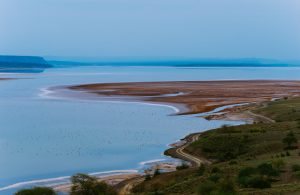 Blue Economy
Blue Economy
The government of Kenya is putting in place appropriate policy and legal framework to support the fisheries and The Blue Economy sector by revising the National Oceans and Fisheries and National Aquaculture policies to maximize on the benefits from these resources.
The coastal and inland waters of Kenya are endowed with vast amounts of marine resources with the potential of producing up to 300,000 metric tonnes of fish. The fisheries sector will be one of the key pillars of economic growth in Kenya with huge potential for major investment opportunities.
The government of Kenya is putting in place measures to achieve
this objective by increasing the landing of fish caught in Kenya’s Exclusive Economic Zone to raise its processing capacity
from the current 2,500 metric tonnes to 18,650 metric tonnes within the next 18 months.With this objective in mind the
Government of Kenya is preparing to negotiate a sustainable fisheries partnership agreement with the European Union.
Sports and Culture
Kenya is a great sporting nation, probably best known its award-winning athletes who scoop several awards at every Olympics and other international meetings worldwide. However, despite athletics being almost synonymous with Kenyan sports, there is a lot more on offer to the sport enthusiast. The international exploits of the Kenyan rugby and cricket teams have placed Kenya higher as global leader in sports.
Most world sports – golf, football, rugby and cricket, to name a few – have taken root in Kenya and are fast growing in their popularity and participation. As such, Kenya is now a sports safari destination where one can enjoy:• golfing on some of the world’s most beautiful courses;
diving in the lovely tropical waters at the coast;
rugby action at the Safari Sevens Rugby tournament;
high-altitude training camps;
and much, much more!
For more information
Embassy of Kenya
Avenue Winston Churchilllaan 208 1180 Brussels Tel: +32 2 340 10 40 Fax: +32 2 340 10 50
